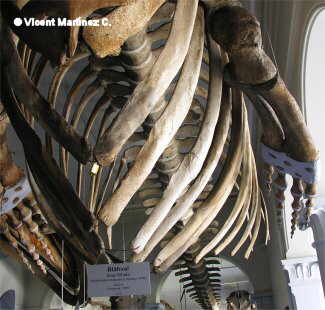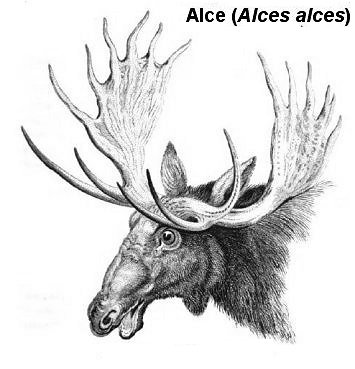Contents
- 1 Characteristics of whales
- 1.1 Facts about whales
- 1.2 What animals are these?
- 1.3 How are these marine mammals?
- 1.4 How many whales species exist?
- 1.5 What do eat these creatures?
- 1.6 What are the enemies of whales?
- 1.7 Why humans hunt these species?
- 1.8 Evolution of whales
- 1.9 Whale reproduction
- 1.10 What is the lifespan of these animals?
Characteristics of whales
Facts about whales
What animals are these?

Whales belong to the order Cetacea, because they are aquatic mammals with extremities transformed into fins and fish-shaped bodies.
They are marine mammals, which means they present a wide set of adaptations to survive in the marine ecosystem. Their adaptation to water is so huge that we can think that instead of being mammals they are fish. However, whales descend from animals of terrestrial habits.
Whales are warm-blooded animals, unlike fish that are cold-blooded animals, because they are mammals. For this, they need to go up to the surface to breathe.
Unlike other mammals, these huge species pass their entire life cycle in water, so they are born, live, sleep and reproduce in this liquid element.
How are these marine mammals?

Whales are the largest mammals in the world. The largest whale species is the blue whale, since it can measure till 30 meters and weigh more than 100 tons. This whale species is also the largest animal that exists in the planet.
Despite being so big, whales have very small eyes and reduced ears. However, both the sense of sight and hearing of these animals are very developed. On the contrary, smell and taste are not very important for whales.
Whales exhibit a strong social pattern. They live in groups.
While fish swim by undulating their bodies to both sides, whales swim when by performing a slow movement in a vertical direction. The tail of whales moves up and down during swimming. Hydrodynamics of whales prevents the formation of turbulence and facilitates the advance of these huge animals. Humpback whales, despite their enormous size, tend to take great leaps out of water due to to their big tail and huge dorsal fins, they are the largest fins of all cetaceans species.
Whales sleep in intermittent periods of about 15 minutes so they can breathe. During these short periods of time that they spend sleeping, they keep in contact with the surface of the water so that their spiracles (that is, holes where they breathe) are out of the water surface.
How many whales species exist?
At present, there are about 40 species of whales in the world and they can be grouped in two categories:
- Odontoceti or toothed whales: The majority of the small whales belong to this group. These cetaceans have all teeth equal, in shape and size. To be considered as a whales, they have a length bigger than 5 meters. Cetaceans with this dimensions include dolphins and porpoises. An example of toothed whale is sperm whale. This cetacean species have a length of 20 meters and a maximum weight of 70.000 kg.
- Mysticeti or whalebone whales: The group of whalebone whales is formed by those cetacean species that has a series of horny plates called baleens. Baleens are used for whales as a filter to capture their tiny food, make up by plankton.
Whales open their mouths to feed up, with the goal of getting as much water as possible. These animals press with the tongue against the filamentous strip of baleens to expel the water from their mouth. So, they can catch the small crustaceans called krill. Species of Mysticeti group are: blue whales, humpback whale, bowhead whales, right whales, gray whales, etc.
What do eat these creatures?
Toothed whales feed on fish, squid, crustaceans and other marine invertebrates. However, orcas diet is more varied, because, in addition to fish, squid and crustaceans, they also hunt seals, penguins and walruses.
Whalebone whales take their food by means of baleens when they filter water. These animals feed on krill, mollusks and small crustaceans and even small fish.
What are the enemies of whales?
The main enemy of the whales is man, who has been hunting them for centuries. However, whales also kill other whales. Moreover, certain species of sharks and swordfish are whales enemies. To defend from their enemies, these mammals live in groups, with which they manage to defend themselves with great success from predators. However, old and sick animals are more vulnerable to predators.
In addition to predators, whales have to face the problem associated with the influence of sounds that are generated by human causes, like that produced by the communication systems of boats or submarines. These elements can interfere in the communication of cetaceans. That’s the reason they can be found sometimes stranded on the beach.
Most species with commercial value are threatened, especially by over-hunting. If whaling is not regulated, many of these species will disappear in the future and, in some cases, whales populations are already so small that they may never be able to recover.
Why humans hunt these species?
Whale hunters look for ambergris. Ambergris is a substance secreted by sperm whales and it is used in the manufacture of perfumes.
Humans also obtain by sperm whales their meat, but only Eskimos people and Japaneses usually eat whale meat.
Spermaceti is a fatty substance that is extracted from a gland in the head of these animals. It is used in the manufacture of cosmetics.
Evolution of whales
Whales descend from a primitive ungulate species. The first known whale species fossil remains are about 50 million years old. However, many scientists believe that the origin of these marine mammals is more ancient, 60 million years ago.
Whales forebears were accustomed to spend more and more time in the sea to avoid their terrestrial enemies.
Whale reproduction
The reproduction of these mammals species is similar to the rest of mammals. Before the copulation, which takes place in the water, whales, perform the courtship. During courtship, humpback whales males emit sounds that last between 6 and 30 minutes. They repeat this song i for hours at a time.
Whales reach sexual maturity between 6 and 13 years of age.
Female whales give birth to a single young after passing through a gestation period of between 9 and 16 months, depending on the species. Sperm whales are those that have a longer gestation, comprising a duration of 15 months.
Milk whale is very rich in nutrients, so their babies can develop very quickly. For example, the newborn offspring of blue whales, which measures 7 m long and weighs 800 kg It doubles their weight in their first week of life and , when being half a year old, it will measure 17 m in length and weigh 20 tons. In some species, such as orcas, young exemplars remain with the family group throughout their lives.
What is the lifespan of these animals?
The longevity of whales mainly depends on species factor. Toothed whales, like beluga whales, live for about 30 years. Sperm whales, have a life expectancy of 70 years.
Whalebone whales are believed to live more than 80 years.
![]() More information on other wild animals.
More information on other wild animals.








